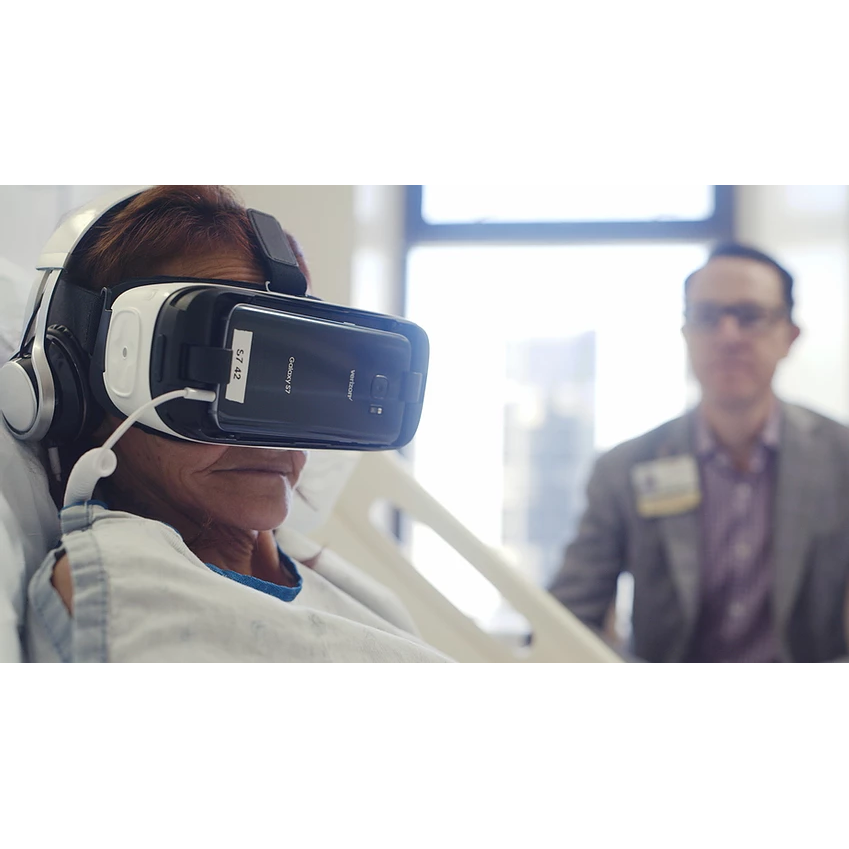VR for managing pain in hospitalized patients: A randomized trial

Therapeutic virtual reality has emerged as an effective, drug-free tool for pain management, but until recently there has been a lack of controlled trials evaluating its effectiveness in hospitalized patients.
To address this unmet need, we performed a prospective, randomized, comparative effectiveness trial in hospitalized patients comparing the impact of on-demand VR versus “health and wellness” television programming for pain in hospitalized patients. Patients in the experimental group received a library of 21 VR experiences administered using the Samsung Gear Oculus headset; control patients viewed specialized television programming to promote health and wellness. The primary outcome was patient-reported pain using a numeric rating scale, as recorded by nursing staff during usual care. Pre- and post-intervention pain scores were compared immediately after initial treatment and after 48- and 72-hours.
There were 120 subjects in the study. The mean within-subject difference in immediate pre- and post-intervention pain scores was larger in the VR group (-1.72 points) than in the control group (-0.46 points); this difference was significant in favor of VR (P < .04). When limited to the subgroup of patients with severe baseline pain (≥7 points), the effect of VR was more pronounced vs. control (-3.04 vs. -0.93; P = .02).
We concluded that VR significantly reduces pain versus an active control condition in hospitalized patients. VR is most effective for severe pain. Future trials should evaluate standardized order sets that interpose VR as an early non-drug option for analgesia.
August 14, 2019



